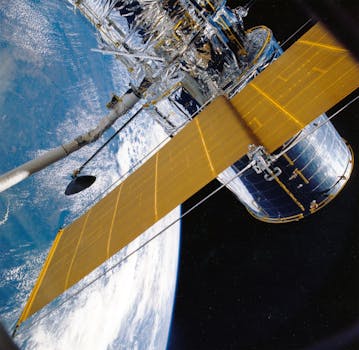
The Future of Satellites is an exciting topic, and as we move forward, it’s clear that Future of Satellites will play a vital role in shaping the world’s communication landscape. With the increasing demand for global connectivity, satellites are becoming an essential component of modern telecommunications. In this article, we’ll delve into the latest developments in satellite technology and explore how they will impact the future of global communication.
Satellites have been around for decades, but recent advancements in technology have made them more efficient, affordable, and accessible. The integration of WordPress into satellite-based systems is also on the rise, enabling users to create and manage their own satellite-based websites and applications. This has opened up new opportunities for businesses, governments, and individuals to reach a global audience and access remote areas.
The Evolution of Satellite Technology
The evolution of satellite technology has been remarkable, with significant improvements in launch systems, spacecraft design, and communication equipment. The development of smaller, more efficient satellites has reduced the cost of launching and operating them, making it more feasible for companies and organizations to establish their own satellite constellations. This, in turn, has led to an increase in the number of satellites in orbit, with many more planned for launch in the coming years.
One of the most significant advancements in satellite technology is the development of low-Earth orbit (LEO) satellites. These satellites operate at an altitude of around 2,000 kilometers, which is much lower than traditional geostationary satellites. LEO satellites have several advantages, including lower latency, higher bandwidth, and improved signal strength. They are also less expensive to launch and operate, making them an attractive option for companies looking to establish a satellite-based network.
The Role of WordPress in Satellite-Based Systems
WordPress is playing an increasingly important role in satellite-based systems, enabling users to create and manage their own satellite-based websites and applications. With the integration of WordPress, users can easily design and deploy their own satellite-based solutions, without requiring extensive technical expertise. This has opened up new opportunities for businesses, governments, and individuals to reach a global audience and access remote areas.
The use of WordPress in satellite-based systems also enables real-time communication and data transfer, which is critical for applications such as emergency response, remote monitoring, and IoT connectivity. With the ability to access and manage satellite-based systems remotely, users can respond quickly to changing situations and make data-driven decisions.
The Future of Satellites and Global Connectivity
The future of satellites is set to revolutionize global connectivity, with advancements in satellite technology and the integration of WordPress. As the number of satellites in orbit continues to grow, we can expect to see significant improvements in global communication, including faster data transfer rates, lower latency, and greater accessibility.
The impact of satellites on global connectivity will be felt across various industries, including telecommunications, emergency services, finance, and education. With the ability to access remote areas and provide real-time communication, satellites will play a critical role in bridging the digital divide and promoting global understanding.
In conclusion, the future of satellites is exciting and full of possibilities. With advancements in satellite technology and the integration of WordPress, we can expect to see significant improvements in global connectivity, enabling businesses, governments, and individuals to reach a global audience and access remote areas.



